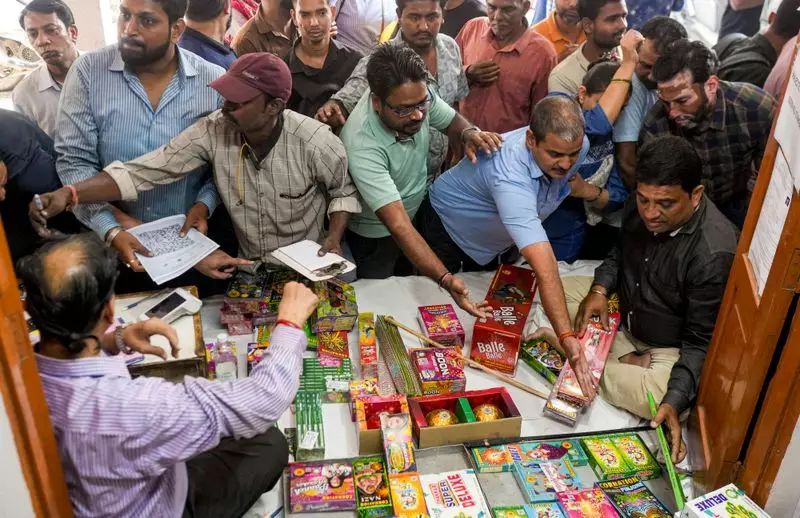
As India prepares for its festive season, the debate around fireworks intensifies, with green crackers emerging as the government's recommended alternative. But how different are they really from traditional fireworks, and do they live up to their eco-friendly claims?
What Exactly Are Green Crackers?
Developed by the Council of Scientific and Industrial Research (CSIR), green crackers represent India's scientific approach to balancing tradition with environmental concerns. These specialized fireworks contain reduced levels of raw materials and additives, resulting in approximately 30% lower particulate matter emissions compared to conventional alternatives.
The most significant improvement lies in their chemical composition. Unlike regular fireworks that use barium nitrate - a major pollutant - green crackers utilize potassium nitrate as an oxidizer. This crucial substitution dramatically reduces harmful emissions while maintaining the visual spectacle people expect during celebrations.
The Three Varieties Available
Consumers can choose from three CSIR-approved types:
- SWAS (Safe Water Releaser) - Releases water vapor that suppresses dust particles
- STAR (Safe Thermite Cracker) - Eliminates potassium nitrate and sulfur content
- SAFAL (Safe Minimal Aluminum) - Uses magnesium instead of aluminum
Noise Reduction: A Welcome Change
One of the most appreciated benefits of green crackers is their reduced noise output. Manufactured to produce sounds between 110-125 decibels, they're significantly quieter than conventional fireworks that can reach 160 decibels or more. This makes them particularly suitable for residential areas and sensitive locations.
The Safety Paradox: Cleaner Doesn't Mean Completely Safe
Despite their environmental advantages, green crackers come with important safety caveats that consumers must understand:
- Chemical Content Remains - While reduced, they still contain potentially hazardous chemicals
- Fire Risk Persists - The combustion process still poses fire hazards
- Health Concerns - Sensitive individuals may still experience respiratory issues
- Quality Control Issues - The market faces challenges with counterfeit products
Identification and Authentication
To combat imitation products, genuine green crackers feature distinct identification marks. Look for the CSIR-NEERI/CSIR-CECRI logo and a QR code that allows verification of authenticity. This system helps consumers distinguish between approved products and regular fireworks falsely marketed as "green."
The Supreme Court's Stance
The Indian Supreme Court has taken a firm position on firework regulation, permitting only green crackers during festive seasons. The court has specifically banned joined firecrackers (laris) and established time restrictions for their use, typically between 8-10 PM during Diwali.
The Verdict: Progress with Precautions
Green crackers represent a significant step toward sustainable celebrations, offering reduced emissions and lower noise pollution. However, they're not a complete solution. Experts emphasize that they should be viewed as a less harmful alternative rather than a completely safe option.
As India continues its journey toward cleaner air, green crackers serve as an important transitional product. Yet the ultimate solution might lie in embracing celebration methods that prioritize both tradition and environmental responsibility without compromise.





